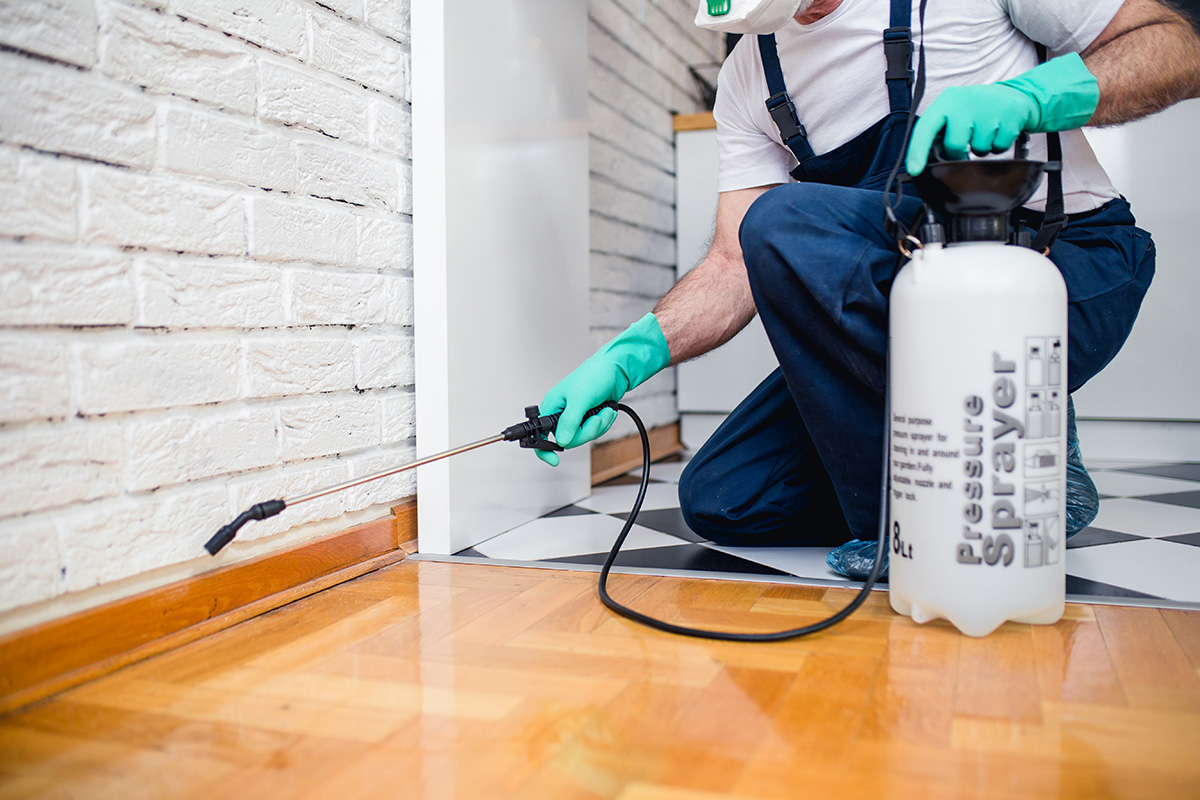A1 Charlotte Pest Control Companies - Your Regional Pest Professionals
Wiki Article
Bed Bug Therapy Breakdown: Comparing Chemical Vs. Non-Chemical Solutions
In the realm of bug control, especially when managing the relentless issue of bed bugs, the option in between chemical and non-chemical treatment services can be an essential one. Both methods supply distinct advantages and drawbacks, influencing aspects such as efficiency, security factors to consider, and general price. By analyzing the nuanced details of each technique, a clearer understanding of which path to pursue in addressing a bed bug problem can be achieved.Effectiveness of Chemical Treatments
Chemical treatments for bed insect problems have actually been extensively identified for their potent and rapid effectiveness in eliminating these pests. When taking into consideration the efficiency of chemical therapies, it is vital to comprehend that they can offer a quick and complete remedy to a bed pest trouble. Professional pest control specialists frequently rely upon insecticides to target bed bugs at various stages of their life cycle, including eggs, adults, and nymphs. These chemicals usually function by interrupting the bed bugs' nerves, causing paralysis and ultimate fatality.Additionally, chemical therapies have the advantage of using residual results, implying that they can remain to eliminate bed pests even after the initial application. This residual action is specifically useful in combating any potential re-infestations. In addition, the rapid activity of chemical therapies can bring relief to people encountering serious bed pest invasions, permitting them to gain back control of their living spaces promptly.
Security Worry About Chemical Solutions
One essential facet that requires mindful consideration when making use of chemical options for bed pest therapy is ensuring the security of occupants and the atmosphere. Direct exposure to particular chemicals made use of in bed bug therapies can lead to respiratory problems, skin irritability, or various other adverse reactions, specifically in individuals with pre-existing conditions or level of sensitivities.Furthermore, the ecological impact of chemical services is another substantial consideration. Some chemicals utilized in bed bug treatments might be hazardous to valuable pests, wildlife, and ecosystems if they leach into the dirt or water supply. It is crucial to use chemical treatments judiciously, complying with safety standards, and taking into consideration less poisonous alternatives to reduce these dangers and make sure the reliable and secure management of bed bug problems.
Advantages of Non-Chemical Approaches
Considering the prospective security issues and ecological effect connected with chemical remedies for bed insect therapy, exploring non-chemical strategies offers a promising option with a number of unique benefits. Non-chemical methods provide a much safer choice for families, particularly those with individuals, youngsters, or pet dogs conscious extreme chemicals. These strategies remove the threats of direct exposure to harmful compounds, minimizing the possibility for adverse health impacts. Furthermore, non-chemical therapies are environmentally pleasant, as they do not add to air or water air pollution, making them a lasting selection for insect control.Furthermore, non-chemical remedies can be efficient in targeting bed pests, including hard-to-reach locations where chemical treatments may not penetrate. Methods such as warmth treatment, vacuuming, steam cleansing, and bed mattress coverings provide thorough eradication without the usage of harmful chemicals. Additionally, non-chemical approaches can be less disruptive, calling for minimal preparation and enabling for quicker reentry into treated areas. On the whole, choosing non-chemical bed insect treatment click for more info methods not only prioritizes security and ecological protection but likewise ensures thorough and efficient bug control.
Limitations of Non-Chemical Treatments

In addition, non-chemical therapies typically call for numerous applications to achieve successful elimination. This can be lengthy and might not constantly assure complete elimination of all bed bugs and their eggs, especially in hard-to-reach or surprise locations.
Additionally, the success of non-chemical therapies heavily counts on proper implementation and thoroughness, which can be challenging for individuals without expert competence. Poor application of non-chemical approaches might result in insufficient obliteration, causing relentless invasions and the demand for added therapies.
As a result, while non-chemical treatments have their benefits, it is necessary to recognize these limitations and consider them when establishing the most effective approach for managing bed bug infestations.
Expense Contrast: Chemical Vs. Non-Chemical Options
Provided the restrictions associated with non-chemical treatments, a vital element to assess in the context of bed bug management is the price comparison between chemical and non-chemical alternatives. Chemical therapies normally include the application of insecticides by experts, which blog here can vary from $250 to $900 per room, depending on the extent of the invasion and the dimension of the location to be treated. In contrast, non-chemical treatments like heat treatment or vapor can be extra costly, with costs ranging from $1,000 to $6,000 for an entire home. While the first expense of chemical treatments might seem lower, numerous therapies may be called for to completely eliminate the infestation, possibly enhancing the total expense. On the various other hand, non-chemical alternatives may provide a much more lasting and eco-friendly remedy, although they can be cost-prohibitive for some people. Inevitably, when taking into consideration the expense of bed bug therapy choices, it is very important to weigh the upfront expenditures against the performance and lasting sustainability of the chosen technique.Conclusion

Thinking about the potential safety and security problems and environmental influence associated with chemical options for bed pest therapy, discovering non-chemical methods presents a promising option with a number of distinctive advantages.Given the restrictions associated with non-chemical treatments, an important aspect to review in the context of bed insect administration is the expense contrast between chemical and non-chemical options. In contrast, non-chemical treatments like heat treatment or steam can be much more expensive, with expenses ranging from $1,000 to $6,000 for an entire home. While the initial cost of chemical treatments might seem lower, several treatments may be required to completely remove the invasion, potentially enhancing the overall cost.In final thought, when contrasting chemical and non-chemical bed bug treatment options, it is vital to consider efficiency, safety, benefits, restrictions, and expense.
Report this wiki page